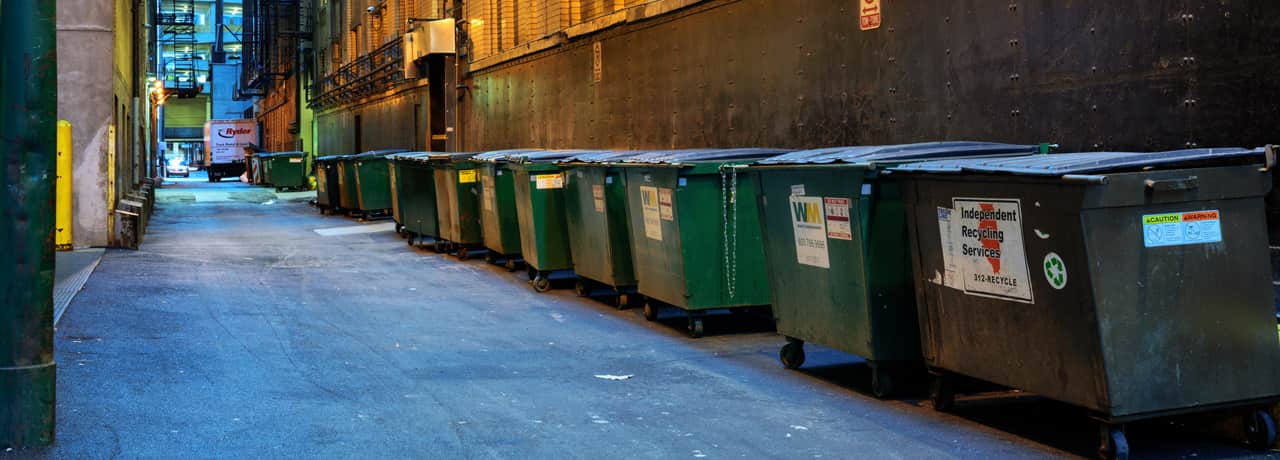April 7, 2017

Related Blogs:
Sign up for blog updates
Get innovation delivered to your inbox. Sign up for our blog and stay on top of the very latest from Semtech (formerly Sierra Wireless).
April 7, 2017

It’s an obligation for municipalities and authorities to ensure litter-free streets, of course, but balancing that necessity against increasingly squeezed budgets isn’t easy. Even wealthy cities are struggling to provide basic services, and a large town will typically spend about $15 million per year on waste collection. Ensuring an efficient waste management strategy can result in significant cost reduction—but many cities are left frustrated as they grapple with how to improve efficiency.
Waste and recycling are typically collected using fixed routes and schedules, without taking into account whether bins are actually full. This can leave trash brimming over in popular commercial locations, with cities incurring additional costs since collection teams must make emergency visits to these areas, even as they waste time at low-volume sites that don’t need attention but are on the scheduled route.
Smart bin sensors and mobile connectivity offer a new way of monitoring collection sites. Sensors can be fitted to any container in a matter of seconds, allowing cities to closely monitor fill data. This monitoring is usually performed by ultrasonic technology that can automatically detect different surfaces and waste types. The collected data is then transmitted wirelessly to the cloud, where it can be used by waste management companies to not only monitor when containers need emptying but also to provide insight into popular locations and usage patterns.
This system essentially allows waste management administrators to create demand-based collection routes, increasing or decreasing collection during weekends or busy seasonal periods, for example, or altering fee scales according to usage. Some sensors can even measure internal temperatures, meaning that garbage bins approaching critical levels can be attended to.
Bin sensors are sometimes equipped with SIM cards, which means that they can use existing telecommunications networks to communicate with waste management companies. New sensors connected via low-power wide area technology offer a long-term, cost-effective solution.
In short, IoT sensors provide a better option for cities looking to maintain sustainable, connected growth. And despite being non-mission-critical, data from these devices is still collected in near-real-time. Drivers can receive information directly on a tablet or smart device and alter routes on the fly. So, for example, instead of visiting four bins—two of which are 90 percent full, and two of which are only 20 percent full—as would be the case on a traditional route, an optimized route would only require a visit to the two full bins. This cuts the collection route by 50 percent, resulting in significant savings in terms of fuel and driver hours.
Smart waste management based on this technology has reduced direct costs by up to 50 percent, and some city projects have seen a total cost reduction of up to 80 percent, including significant savings on fuel, driver hours, and equipment wear and tear, not to mention lower exhaust emissions, a reduced carbon footprint, and a cleaner, healthier environment for citizens. As each sensor is equipped with GPS tracking, the exact location of every container is always known as well, preventing lost and stolen bins, which can add up to a significant annual cost for municipalities.
Nor does it end there. Over time, data can be analyzed further, providing a benchmark for:
In the future, technologies may become even smarter by, say, recognizing different types of trash, thus predicting the value of recyclables at each location, or even using social media to broadcast their status, allowing citizens to choose which locations they will use when recycling.
For municipalities moving towards smart city status, such intelligent monitoring can transform waste management policies, not only reducing monetary costs and strain on time and resources, but creating a world-class environment for citizens and visitors alike.
We provide a range of wireless solutions to help today’s communities prepare for tomorrow’s challenges. Start with Sierra to find out how we can work with you to create smarter waste management and smarter cities.
Get innovation delivered to your inbox. Sign up for our blog and stay on top of the very latest from Semtech (formerly Sierra Wireless).